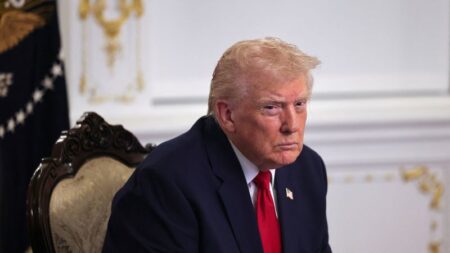The recent appeal presented to the Supreme Court has the potential to test the boundaries of judicial authority in light of President Donald Trump’s stern immigration policies, specifically his approach to deportation. This case probes the limits of executive power and the adherence to judicial rulings, especially concerning individuals facing deportation to places where they may have no familial or societal ties. The matter is pressing, as the Trump administration seeks to expedite the removal of migrants to South Sudan, among other locations, without granting them adequate notice or the opportunity to contest their deportations. A US district court judge in Boston flagged the administration for what he termed a “clear violation” of his orders, citing minimal time allotted to migrants seeking to challenge their removal.
The ongoing legal conflict taps into a growing discontent among even the more conservative justices regarding certain tactics deployed by the Trump administration. This tension has begun to unite justices who are typically at odds on numerous legal matters, particularly on immigration. Prior cases, such as those involving the deportation of Venezuelan migrants under a rarely invoked wartime law, illustrate the complexities at hand. During oral arguments on May 15, justices raised pointed inquiries about whether the executive branch could simply choose to ignore judicial orders. Justice Amy Coney Barrett pressed government representatives on their stance regarding compliance with precedents set by higher courts, illustrating a pivotal moment in understanding the executive’s approach to court rulings.
Sauer, the US Solicitor General, countered Barrett’s inquiry by stating that while the government generally respects court decisions, there are exceptional situations that may warrant deviation from established precedents. This raised the alarm for Justice Barrett, as she pursued clarity on whether the administration recognized the supremacy of the Supreme Court’s rulings. In a remarkable exchange, Justice Brett Kavanaugh echoed Barrett’s concerns, underlining the legal convention that once a court deems a statute unconstitutional, its enforcement ceases nationwide.
Despite a tendency for the conservative justices to support Trump’s initiatives, his uncompromising immigration strategies have led to increased caution among them. This case might amplify existing divisions, particularly regarding deportations to areas known for violence and poor conditions, as illustrated by the case involving detainees now held at a US military installation in Djibouti.
Judge Brian Murphy emphasized the necessity of due process for those with criminal histories, reiterating that it does not negate their rights. The administration defended its position by mentioning compliance with Department of Homeland Security policies, but criticisms remain regarding the rush to deport. The court’s prior history indicates a mixed response to Trump’s numerous executive actions, reflecting the complexities surrounding immigration law and due process.
Doubts about Trump’s expansive use of executive authority are compounded by past cases involving wrongly deported individuals. Such cases have been poignant reminders of the administration’s swift actions, often lacking the requisite procedural safeguards, which elicited reactions of skepticism from the judiciary.
In recent rulings surrounding his immigration policies, the Supreme Court has exhibited a cautious approach when confronting Trump’s agenda. For example, in a case concerning the lifting of temporary humanitarian protections for Venezuelans, the court’s decision highlighted its willingness to challenge executive actions, albeit rarely. Notably, Trump’s actions to enhance deportation measures have sparked widespread alarm across the judiciary, with justices contemplating the repercussions of such policies.
The overarching narrative from these proceedings suggests that Trump’s efforts to streamline deportations without appropriate due process are fracturing trust in the executive branch and pose a challenge to the rule of law. The judiciary’s scramble to address the implications of such executive pursuits underscores the ongoing struggle over the balance of power between the presidency and the courts, particularly in the area of immigration law.
This tension is evident in the court’s recent assessment of nationwide injunctions and their scope. Trump’s push to narrow such injunctions reflects broader concerns over judicial overreach, especially regarding unprecedented decisions like removing the birthright citizenship guarantee for children born on US soil under certain conditions. The case heard on May 15 puts not only Trump’s executive order under scrutiny but also the larger legal framework surrounding mean nation-wide injunctions.
As deliberations continue, various justices express anxiety over the need for a clear and uniform standard that preserves established rights and prevents further fragmentation in the legal response to immigration issues. They face the dilemma between supporting executive power and adhering to long-standing legal principles. Overall, this latest case underlines not only the friction between the core tenets of executive order and judicial interpretation but also signals a pivotal moment in the evolving dynamics of power in the highest court of the land.











